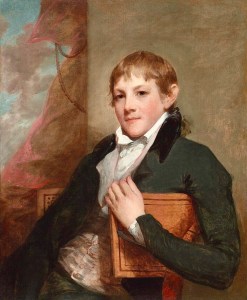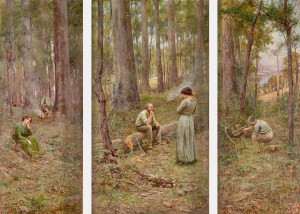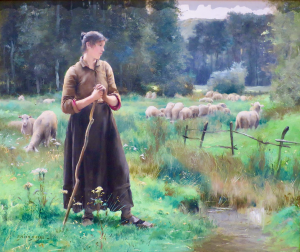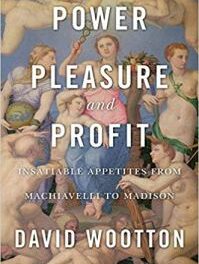We support our Publishers and Content Creators. You can view this story on their website by CLICKING HERE.
Few who knew John Randolph in his youth ever imagined him embracing the tenants of the Gospel or admitting the reality of Original Sin.
He was raised in an orthodox Christian home. He lived in a conservative place, around people who identified as traditionalists. But as Christianity waned in his day, he embraced new vogues. He despised, or air least scorned, traditional Christian orthodoxy and orthopraxy. Few who knew him would ever imagine him embracing the tenets of the Gospel or even admitting the reality of Original Sin. His horse he named Jacobin. John Randolph of Roanoke appeared, in his boisterous and vibrant youth, a least likely convert.
Today, conversions seem very far away in many ways. Christianity is challenged and denigrated in the public square. The number of practicing Christians in the United States, Roman Catholic and Protestant, is on the decline. Mainline Protestants and Progressive Evangelicals deny the most basic Christians truths. Pope Francis has had the unpleasant task of admonishing German bishops over their flirtations with unorthodoxy. Christianity seems on the wane. An occasional minor public figure converts but conservation a la St. Paul is in seemingly short supply.
Christians in the last decade of the eighteenth century experienced a world not so dissimilar from our own. Orthodoxy seemed under assault. Political leaders, especially those close to the ideas of Vice President Thomas Jefferson, paid little attention to religious devotion. Jefferson’s election to the presidency terrified traditionalist Christians. The Virginia planter seemed to be an enemy of chastity, family values, and Christian living. Theodore Dwight, an orthodox Calvinist minister and arch-Federalist, sounded very much like a conservative Christian in the early twenty-first century when he surveyed the world under Jefferson’s administration. Then, as now, Christians committed to the Church and its sacred practice saw a blasphemous state warring against all they held dear. Dwight told his communicants that they now lived in
a country governed by blockheads and knaves; the ties of marriage with all its felicities are severed and destroyed; our wives and daughters are thrown into the stews; our children are cast into the world from the breast and forgotten; filial piety is extinguished, and our surnames, the only mark of distinction among families, are abolished. Can the imagination paint anything more dreadful on this side of hell?
Young Americans fueled by atheistic revolutionary furor applauded the Jeffersonian revolution against Christian morals. At this time in Randolph’s life, noted Henry Adams, “the Christian religion was hateful to him…. He loved everything hostile to it.” Like many Americans in 2016, Randolph’s hatred of Christianity created in him a strange affinity for Islam. “I imbibed an absurd prejudice in favor of Mahometanism and its votaries,” said Randolph. “The crescent had a talismanic effect on my imagination, and I rejoiced in all its triumphs over the cross (which I despised), as I mourned over its defeats.” He exulted over the account of the Ottoman conquest of Constantinople, “when the crescent was planted on the dome of St. Sophia, and the cathedral of the Constantines was converted into a Turkish mosque.”
Randolph’s hatred of Christianity and flirtation with Islam lay in the fury of a man angry with God. Born with systematic health defects that plagued him throughout his life and burdened with a series of family deaths that left him without any familial or social stability, Randolph placed his initial hopes in ideologies that promised some sort of perfection. Christianity seemed so weak. It is likely, although not verifiable, that Randolph particularly despised the Incarnation. That God would so debase himself as to became a man revolted Muslim scholars. And it has angered religious skeptics throughout history from Abu Isa al-Warraq to Christopher Hitchens. The sacramental nature of Christianity particularly annoyed Randolph. His biographer, Hugh Garland, noted that Randolph was in many ways a “cold despiser of the religion of humility and self-sacrifice.”
And so Randolph might have remained. But sometime in 1815, the angry and conceited aristocrat changed. He wrote to a friend, “I never feel so free from uneasiness as when I am reading the Testament, or hearing some able preacher. This great concern presses me by day and by night, almost to the engrossing of my thoughts. It is first in my mind when I wake, and the last when I go to sleep. I think it becomes daily more clear to me.”
He was assisted in his clarity by books written by old English divines, instead of new religious texts coming from the American Second Great Awakening. Deeply religious friends hounded him relentlessly, and Randolph confronted the Christian faith with a desperation that surprised his family and friends. Randolph interrogated the Christians he corresponded with. To his long-time friend, devout Maryland attorney Francis Scott Key, he wrote: “I cannot refrain from unburdening some of my thoughts to you. I carry your last letter constantly in my pocket, reading it frequently, and praying God that your charitable anticipations respecting me may be realized.” Was there not, worried Randolph, “selfishness at the bottom of that yearning of my heart to believe? Can that faith, setting aside its imperfection, be acceptable in the sight of God, to which the unhappy sinner is first moved by the sense of self-preservation?”
Key and others slowly but surely convinced Randolph of the Christian understanding of divine love and atonement. And by the middle of 1815, Randolph began to publicly articulate tenants of the Christian religion. Most of his close friends remained aloof from the Christian religion. Randolph attacked their unbelief with the zeal of a convert. He wrote lovingly, but it was obvious to all who knew him that while his propensity to gloom might remain, his anger was gone. To a skeptic-friend, he wrote passionately of the reality of original sin, and of salvation. “That we have ruined ourselves—that an everlasting life is before us—that we are about (how soon we know not) to enter upon it, under the sentence of Almighty condemnation—and that we can do nothing to save ourselves from this misery; these convictions are the genuine work of the Spirit; other foundation can no man lay!” Randolph’s newfound faith led him to a “Saviour who gives us all we want—pardon, peace, and holiness. They do not bid us first to become righteous, and then come to him; but they bring us to him as we are—as sinners to be pardoned for our sins, and cleansed from all our iniquities.”
For the rest of his life, Randolph practiced a devout Christian faith. That he was affected was never doubted by his contemporaries. In the final years of his life, Randolph’s moral imagination led him to take a series of lonely political positions that earned him the respect of traditionalist conservatives in the twentieth century. He remained eccentric. He wore a bathrobe over his clothes, kept his spurs on indoors, and often sat in the House and Senate chambers with his two large hounds at the foot of his desk. He accepted a challenge to a duel from Henry Clay, then famously shamed the Great Compromiser by firing twice in the air. Clay, terrified of Randolph’s reputation as a crack shot, practiced daily for the duel. When he realized Randolph never meant to kill him, he left the dueling field rather quickened. Christianity fired Randolph’s moral imagination through it all.
The valedictory of Randolph’s life exceeded that of Jefferson and even the great Washington. The state of Virginia made emancipation increasingly difficult after 1831. On his deathbed in 1833, Randolph asked his slave to lock his white doctor in the room with him. Startled, and not a little fearful, the doctor demanded to know what Randolph was doing. Only then did his manservant realize that Randolph intended to free every single one of his almost 300 slaves. He needed a white man to attest the will, for Virginia’s slave code forbade African Americans from testifying in legal matters. And with Randolph’s death, his slaves became free men. Randolph’s action was tragically rare in the Old South. And so too was the magnitude of his devotion.
This essay was first published here in July 2016.
The Imaginative Conservative applies the principle of appreciation to the discussion of culture and politics—we approach dialogue with magnanimity rather than with mere civility. Will you help us remain a refreshing oasis in the increasingly contentious arena of modern discourse? Please consider donating now.
The featured image is a portrait of John Randolph (between 1804 and 1805) by Gilbert Stuart, and is in the public domain, courtesy of Wikimedia Commons.
Share This Story, Choose Your Platform!
Go to Top

 Conservative
Conservative  Search
Search Trending
Trending Current News
Current News 







